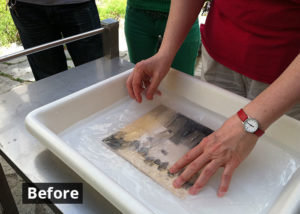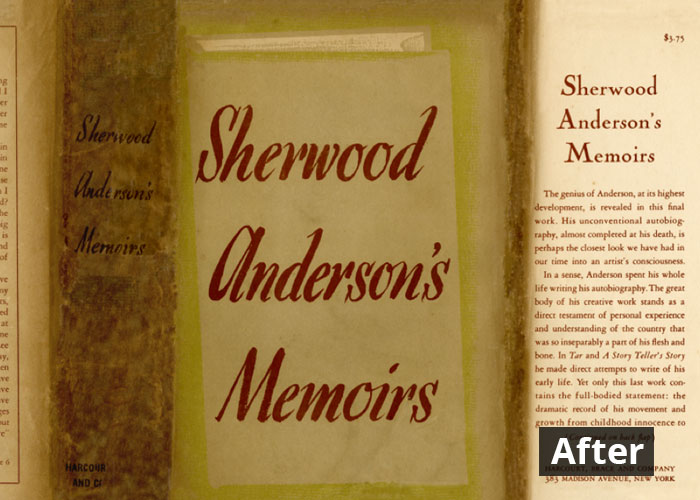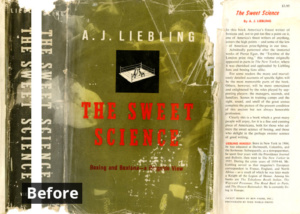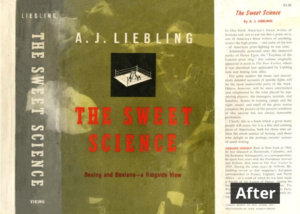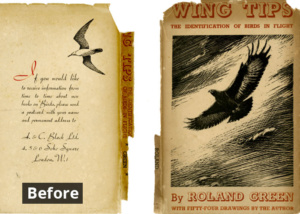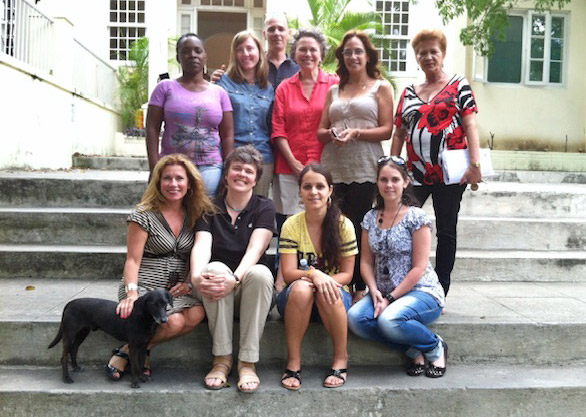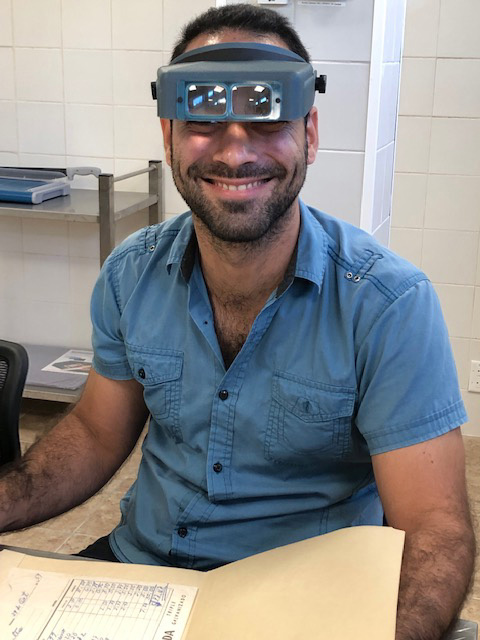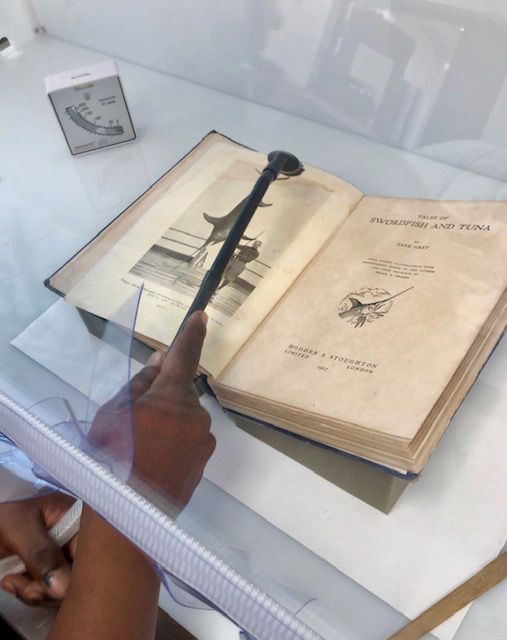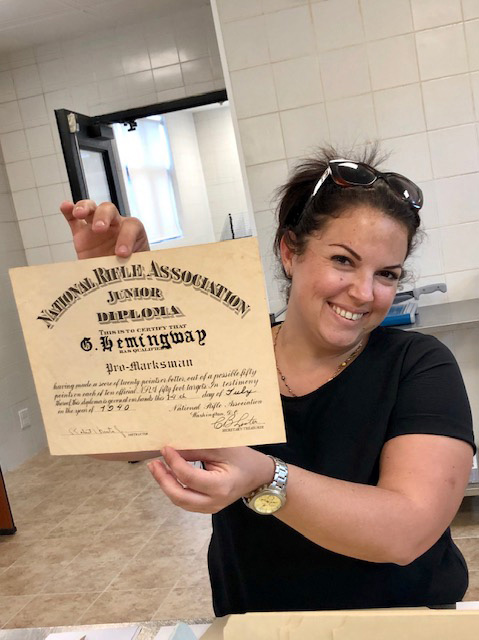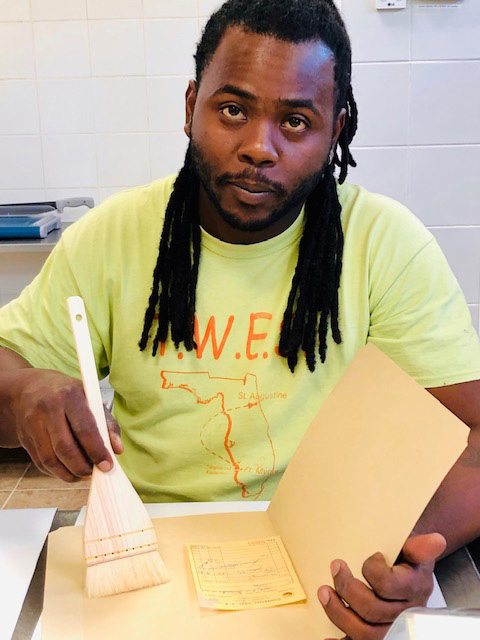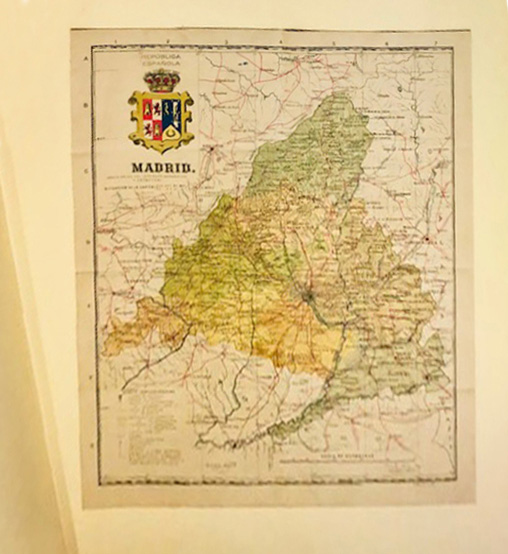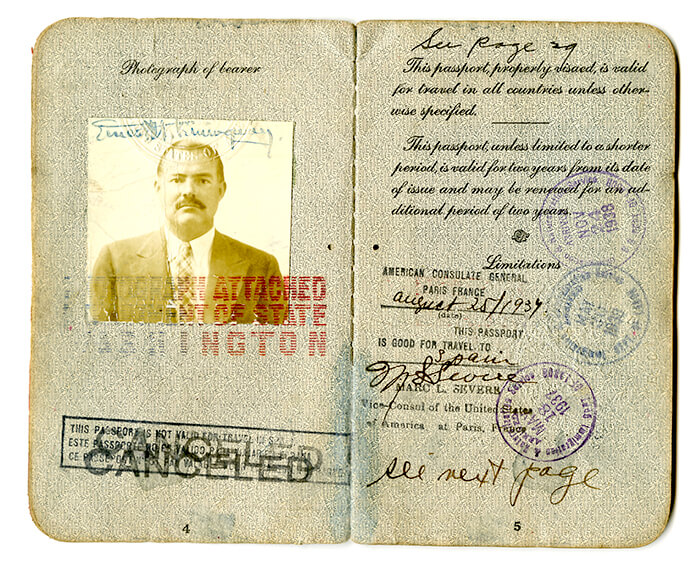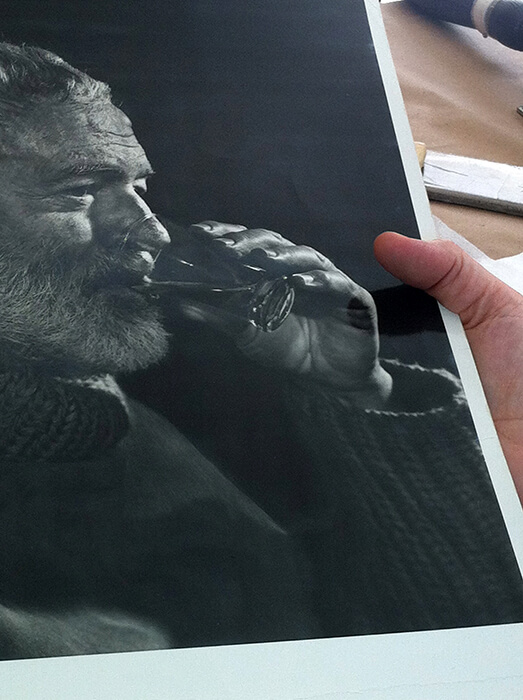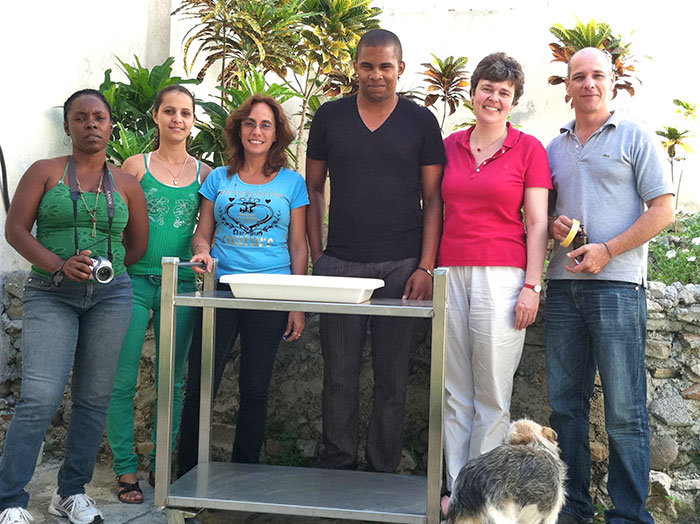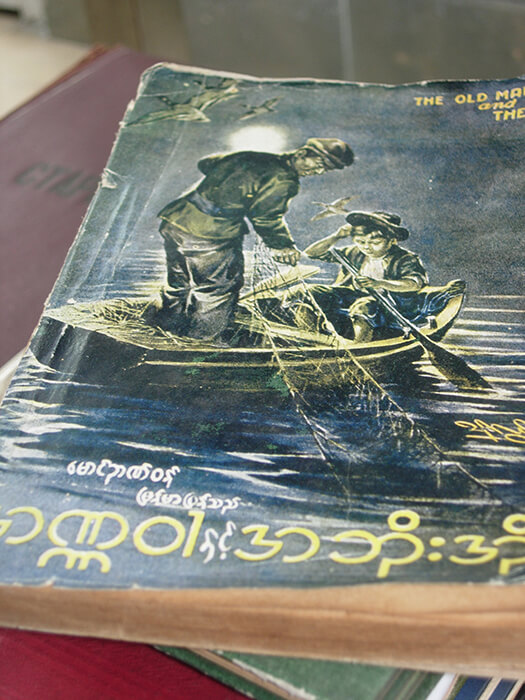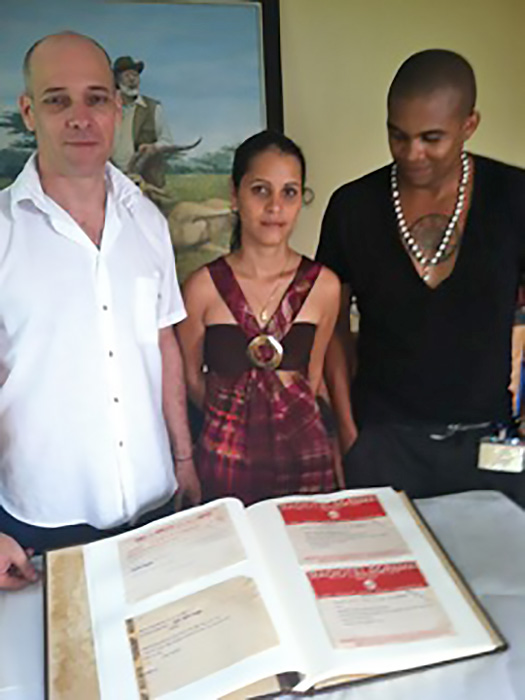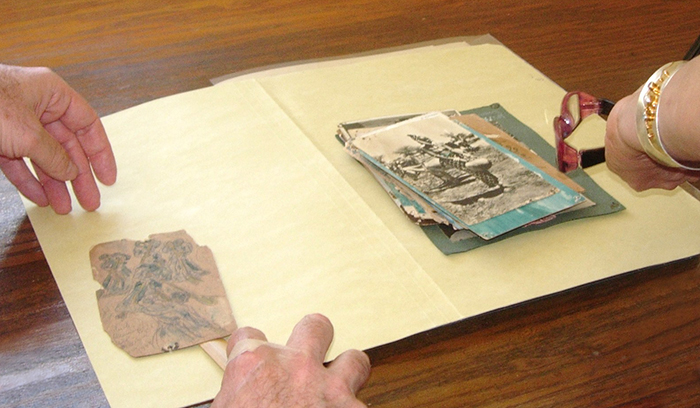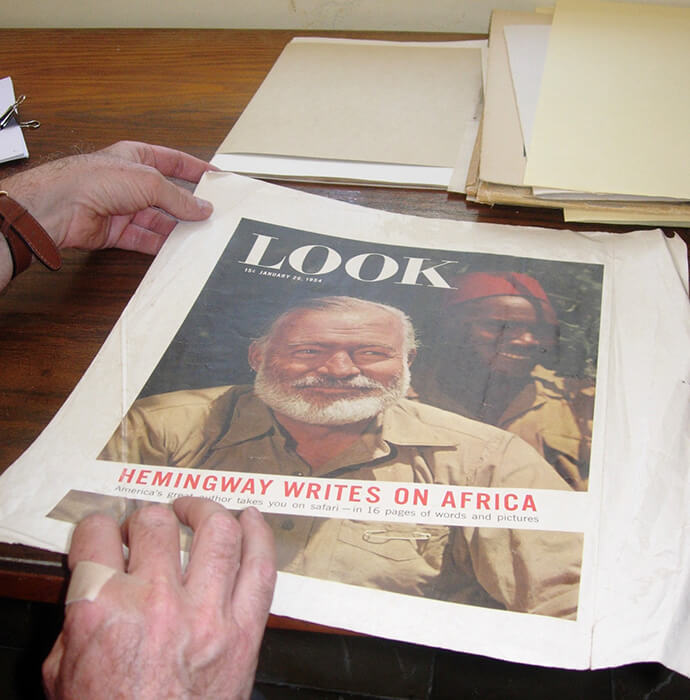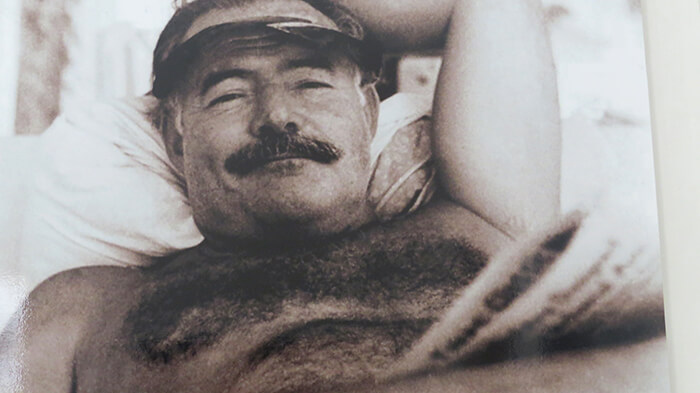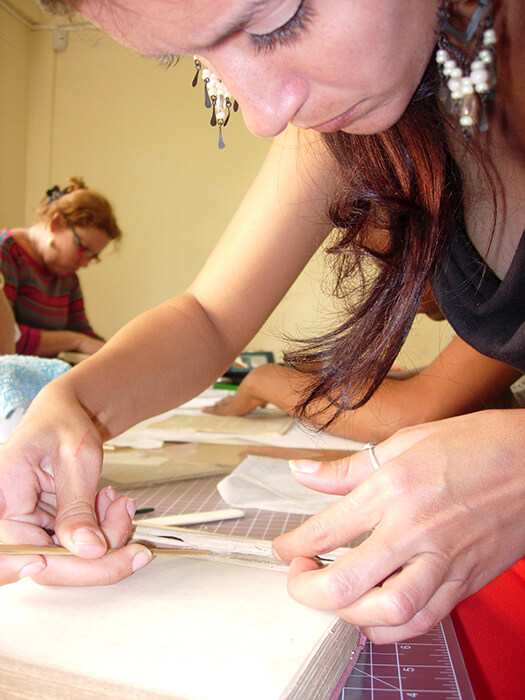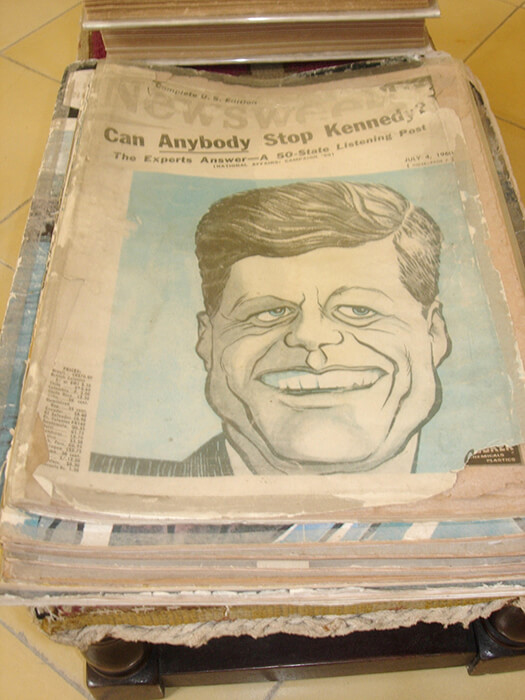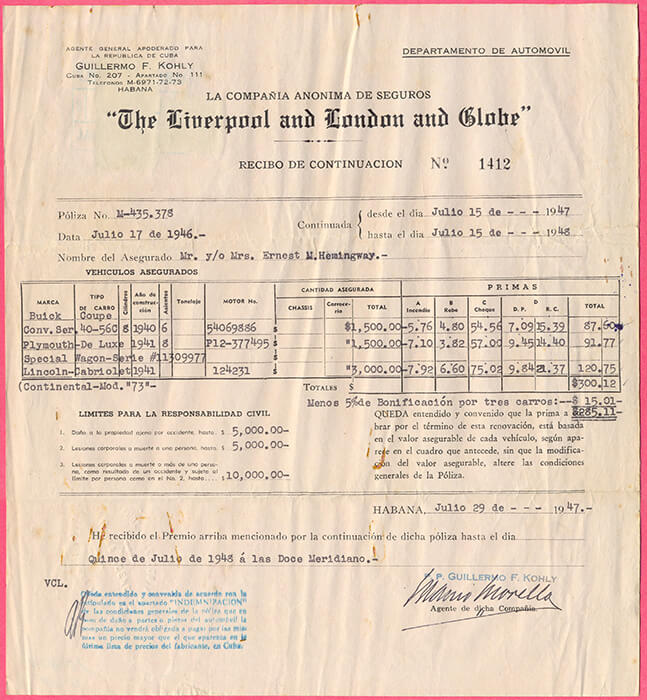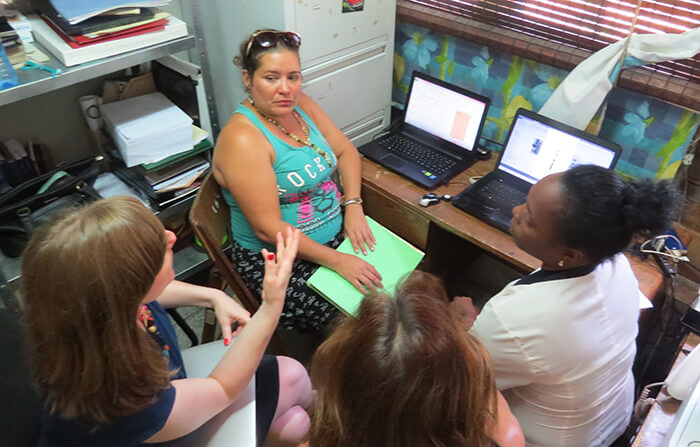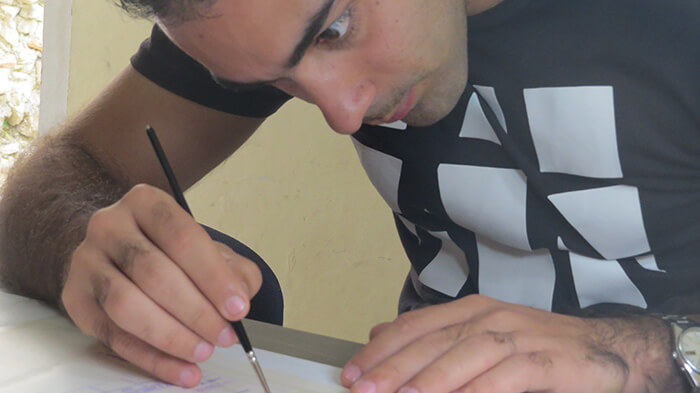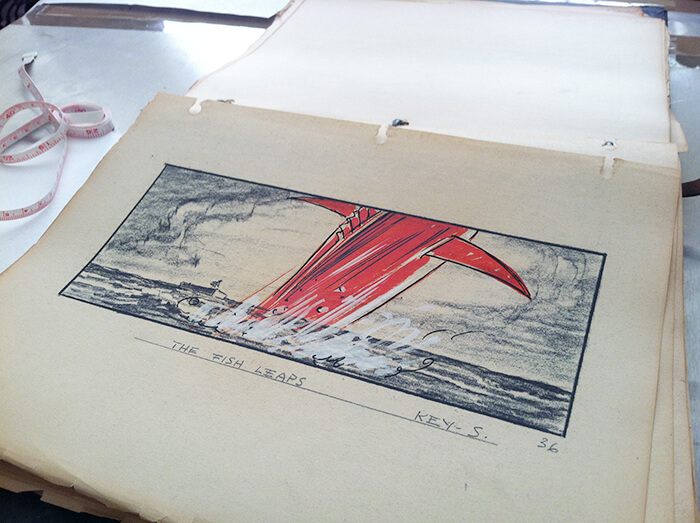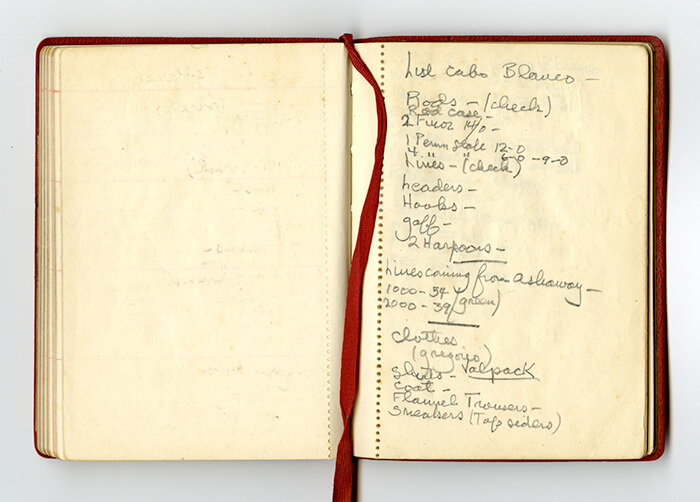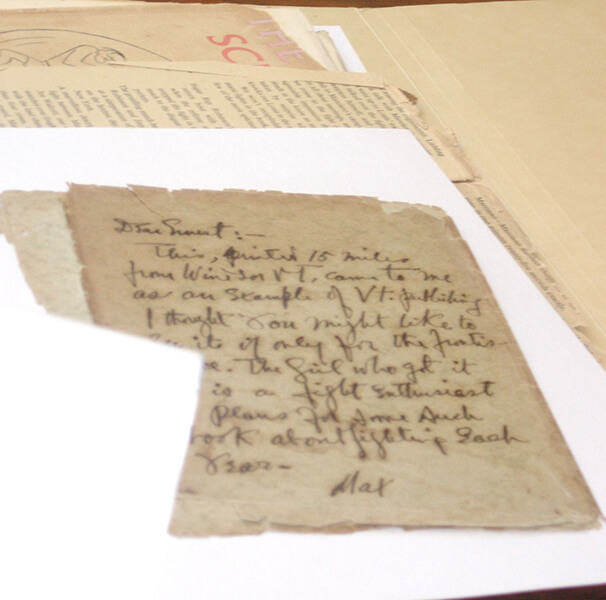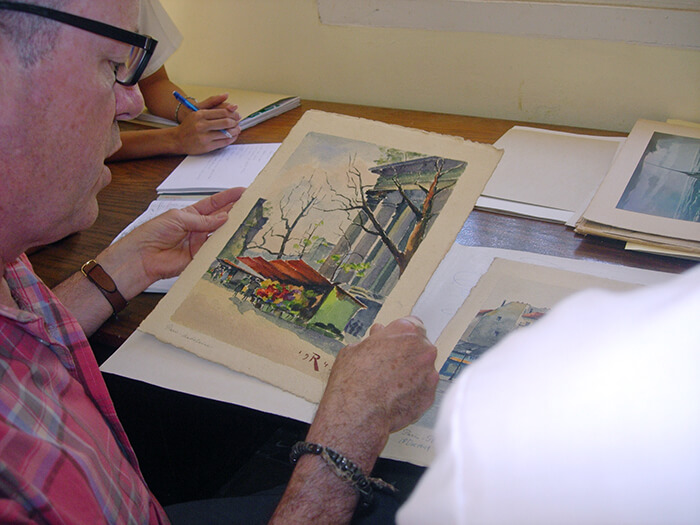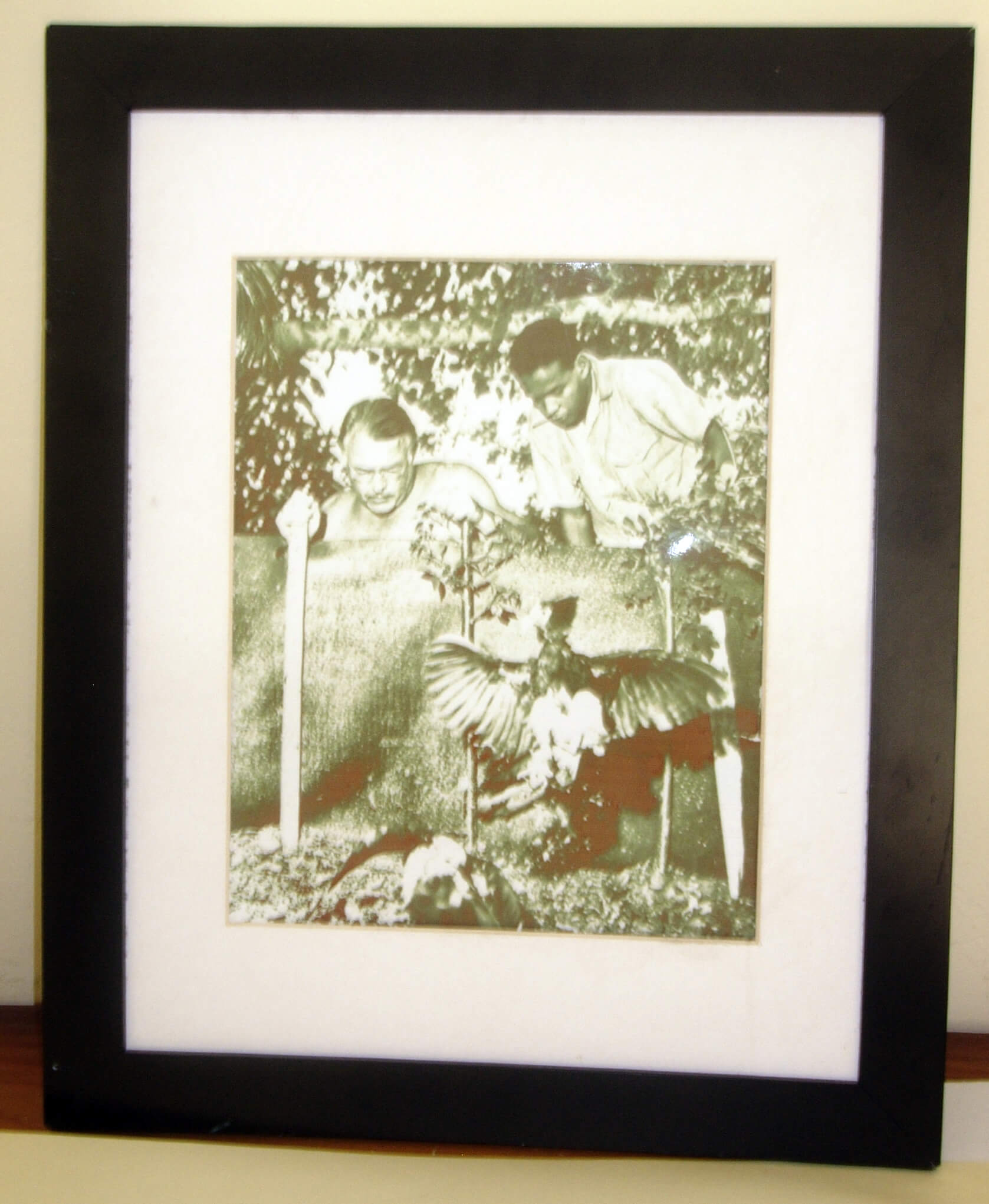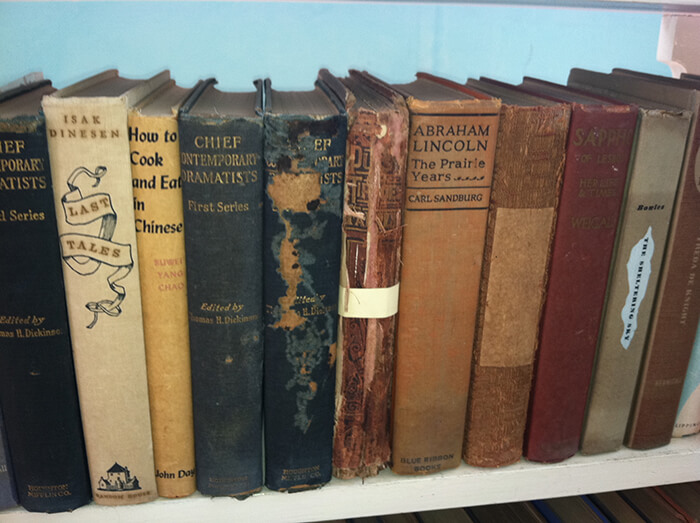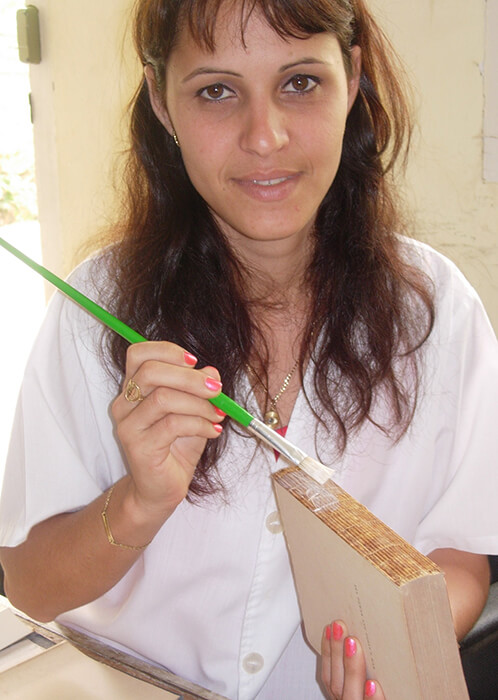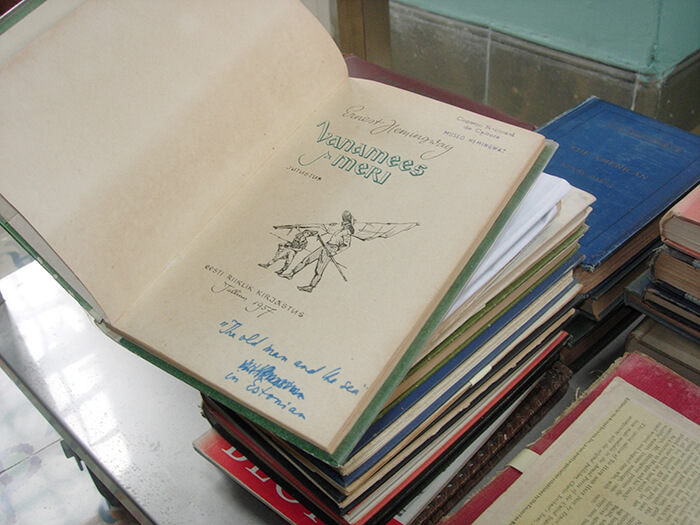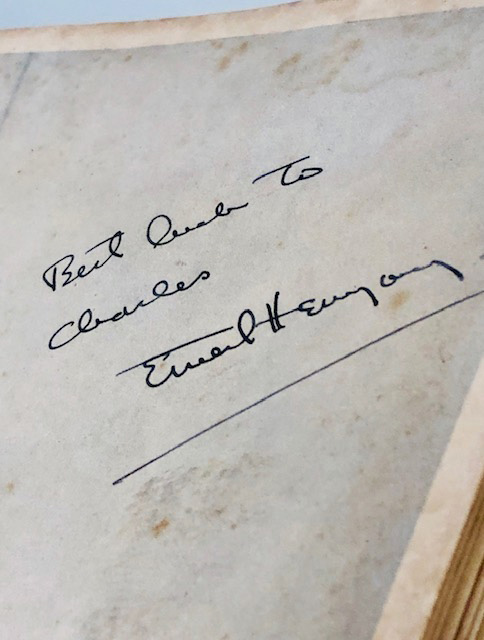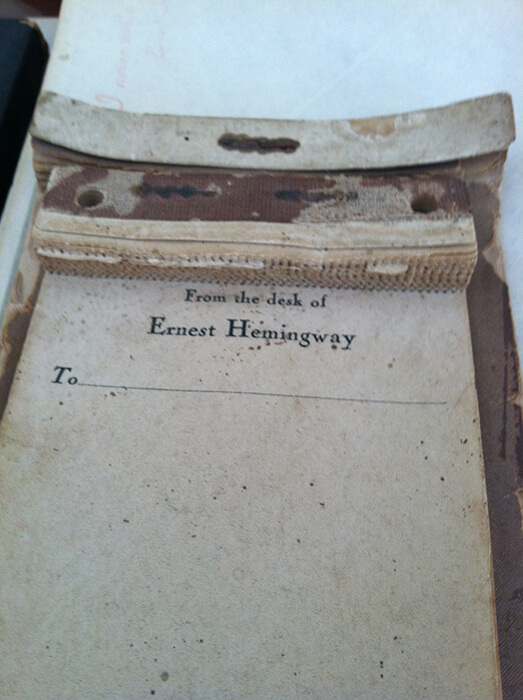
All digital images of documents and photographs are from the Hemingway Collection of the Museo Ernest Hemingway of the Republic of Cuba.
Document Conservation
A Remarkable Collection: A Piece of American Cultural Heritage
Document conservation efforts began in 2002 with a collections assessment study. Renowned paper and photograph conservators from Northeast Document Conservation Center in Andover, MA, was commissioned. The goal was to determine the extent of the Hemingway collection and the likelihood of success of conservation efforts. The study results were positive. Though the Hemingway documents were in need of conservation, they were in good enough condition to withstand treatment.
We learned quickly that the Hemingway collection at Finca Vigía is remarkable in its size and variety. It is a treasure trove of documents, sure to provide valuable information about the author’s life for scholars around the world.
The collection is extraordinary. Examples include the epilogue not chosen from For Whom the Bell Tolls … a series of love letters written from the front during the last months of WWII courting his forth wife while married to his third … letters sent and received from more than 300 people including Marlene Dietrich, Ingrid Bergman, F. Scott Fitzgerald, Joan Miro, and Maxwell Perkins … Nobel Prize congratulatory telegrams from around the world … letters to his beloved sons … instructions in Spanish to the cook regarding preparation of favorite dishes and the day of the week he preferred to eat them … photographs of dinner parties, fishing trips, African safaris, and family celebrations … a 9,000 book personal library…..and much more.
Some papers are more than 100 years old. The most recent are from 1960. All were fragile, deteriorating, in peril of destruction by time and climate.
Similar to our strategy for architectural preservation, we brought document conservators from the United States to teach best practices for flat paper (galley proofs, correspondence and telegrams), books (library and scrapbooks) and photographs. We also taught digitization, imaging, and the use metadata.
Because conservation problems faced at Finca Vigía were common throughout Cuba, our consultatants offered lectures at the Cuban National Archives and the Instituto de Historia to share knowledge with other conservators.
Accomplishments
In accordance with standard practice, the original documents will remain in place. Digital images were brought to the United States. More than 10,000 imaged documents, representing almost 100,000 pages have been received and archived in the John F. Kennedy Library in Boston. Most recently, we brought 4,500 digital images of photographs to the Kennedy Library.
Going Forward
Much remains to be done related to advanced conservation of the books and oversized objects such as Hemingway’s vast map collection, as well as the use of metadata. Hemingway wrote in the margins of 18% of his books. The conservation of the marginalia is almost complete. It will be digitized when resources allow.
Proper storage of the conserved documents was always a serious concern by both Cuban and U.S. experts. Until recently, museum quality archival storage with temperature and humidity controls did not exist at Finca Vigía.
From 2015 until 2019, architects, engineers, construction tradespeople, and document conservators worked together to design and build a restoration center with laboratories and archival storage. See New Construction.
The Foundation’s document conservators advised Cuban conservators in the best ways to carefully transfer, surface clean, and archive the irreplaceable Hemingway collection. Most documents currently reside safely in the climate controlled storage vault. Others still need attention.
